I have two 2d numpy array (images). First one defined by image, is storing the sum of a movement at the pixel (i,j)
Second one define by nbCameras, is storing the number of cameras who can see a movement at this pixel (i,j)
I want to create a third image imgFinal which only store the value of the pixel (i,j) and it's neighbours (3 x 3) mask, if the number of cameras who can see the pixel (i,j) is greater than 1.
For now I'm using two for loops which is not the best way. I'd like to increase the speed of the computation but I didn't find the best way to do it yet. Also I'm a bit blocked as the fact I want to converse the neighbours of the pixel (i, j)
I also tried to use bumpy.vectorize but i can keep the neighbours of my pixel in this case.
What would be the best way to increase the speed of this function?
Thanks for your help!
maskWidth = 3
dstCenterMask = int( (maskWidth - 1) / 2)
imgFinal = np.zeros((image.shape),dtype = np.float32)
for j in range(dstCenterMask,image.shape[0] - dstCenterMask):
for i in range(dstCenterMask,image.shape[1] - dstCenterMask):
if nbCameras[j,i] > 1
imgFinal[j - dstCenterMask : j + dstCenterMask + 1, i - dstCenterMask : i + dstCenterMask + 1] =
image[j - dstCenterMask : j + dstCenterMask + 1, i - dstCenterMask : i + dstCenterMask + 1]
